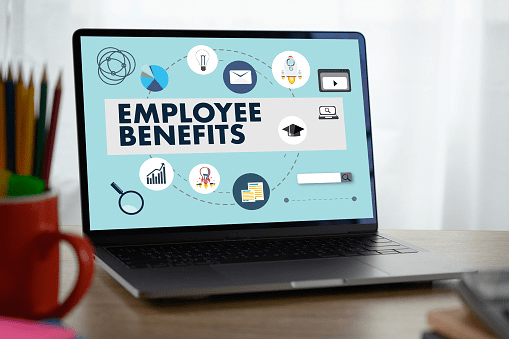Before discussing employee benefits, we first need to bring clarity about what we are talking about. Compensation forms other than base salaries or wages are called employee benefits. These forms of compensation may be both tangible as well as intangible. Such a definition includes varied types of job benefits like the following under its scope:
- Insurance (life, medical, dental, vision insurance)
- Stock options
- Paid internet and mobile use
- Training opportunities
- Perks
- And sometimes even the use of ping pong tables!
When we talk about employee benefits, we refer to any non-wage benefits of being an employee of a company. Such benefits may be both voluntary as well as compulsory for the employer to provide.
Primary Types Of Employee Benefits
The primary or significant employee benefits are the benefit categories that companies across the world usually provide. There is a tendency to limit the scope of such benefits by limiting them to different forms of insurance only like life insurance, health insurance, retirement plans, and disability insurance. Considering their importance, businesses must systematically manage the whole process, and this site should help. But to include other significant types of benefits that employees get, we need to group the benefit types, which are as follows:
Information Use !!
Concerned about online trackers and introducers tracing your internet activity? Or do you face geo-restrictions while streaming? Get NordVPN - the ultra-fast VPN trusted by millions, which is available at 69% off + 3 Months Extra. With the Double VPN, Split tunneling, and Custom DNS, you can experience internet freedom anytime, anywhere.

- Retirement plans
- Insurance
- Additional remuneration
- Paid time off
Let us discuss these employee benefits in some additional detail:
Insurance
Companies can offer employees different types of employee benefits. These include:
- Health insurance covering various health issues like medical, dental, and vision problems
- Life insurance
- Disability insurance
Many countries have made it legally necessary for businesses to offer employees some medical plan. Often there are provisions for public medical care that are funded and sponsored by employer firms. But employers who want to give nothing but the best to their employees tend to opt for individual insurance or private group insurance. One of the key benefits of life insurance is that it gives companies a chance to show their concern not only for their employees but also for their family members. When employees die, families stand to be relieved from some of the unfortunate incident’s economic distress. It helps pay for usual expenses related to the funeral besides giving them a fund to maintain their living, albeit for a limited period. AD&D policies or Accidental Death and Dismemberment provisions complement such life insurance options. They help workers who meet with accidents that don’t let them work typically or die from such injuries.
On the other hand, disability insurance offers workers assistance for short-term and long-term illnesses and disabilities. Such insurance makes sure that employees get paid even if they can’t work due to illness. Short term disability insurance also covers absence from work due to essential life landmarks like maternity.
Retirement
Companies offering retirement benefits ensure that their employees feel safe about the financial future, which lies ahead of them post-retirement. Such an option includes the US 401(k) plan where employers and employees together contribute to the latter’s retirement fund. However, this fund is no guarantee of the future financial well-being of employees as the investments made through the plan may not work as per expectations. Employees can make their choice in terms of where and how much they want to invest. Usually, employers match a specific percentage of the employee’s funds to their 401(k) fund. When employees retire, they receive the funds they have collected in the plan. Before implementing a 401(k) plan, it is helpful to consider the various open options as its different forms. Some employers also provide defined retirement plans solely funded by employers. It ensures that employees receive a set monthly income when they retire. The exact amount depends on the retiring age and time a person has served in the company.
Paid Leaves

Many countries, especially those in the EU, offer a mandatory period of paid annual leaves. While it is not compulsory for US companies, the ones that offer paid leaves attract and retain better talent. Almost 90% of all employees consider paid leave to be an essential part of overall job satisfaction. Paid leaves include both vacation time off as well as sick leaves.
Additional Compensation
Any financial assistance other than the usual remuneration is categorized as additional compensation benefits. Such benefits include:
- Bonus payments
- Commissions
- Gifts
- Awards
- Indirect compensation formats like profit-shares and stock options
Such forms of monetary compensation serve to motivate employees and keep their morale high.
There is no fixed answer about the most valued employer benefits. It varies, and most employees value all of the available options. But considering that most employers have a limited budget they can turn to, it is essential to choose the right mix. And the first to do is to figure out the ones you must provide as per law. Then you can proceed to consider the other available option. Hope this helps!
Thank you for visiting techfollows.com.
Disclosure: If we like a product or service, we might refer them to our readers via an affiliate link, which means we may receive a referral commission from the sale if you buy the product that we recommended, read more about that in our affiliate disclosure.

